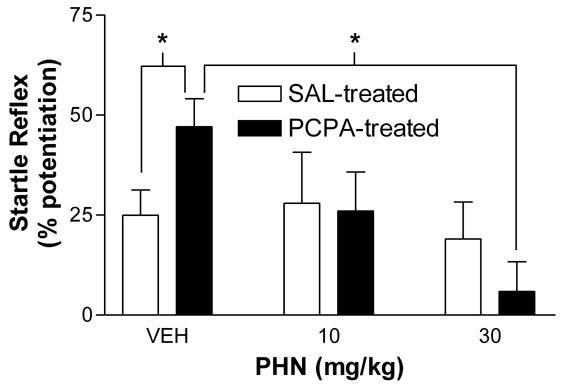Figure 2.

Phenytoin (PHN) reduces FPS selectively in PCPA-treated rats. Individually housed rats received i.p. injections of either saline (SAL) or PCPA (300 mg/kg) on days 1 and 10. FPS was measured 30 min. after injection of PHN (0, 10, or 30 mg/kg i.p.) within subjects on days 13, 15, and 17. On days 14 and 16, animals were retrained with CS-US pairing to minimize extinction. In individually-housed, PCPA-treated rats FPS was 47 ± 7% in control (n = 22), and reduced to 26 ± 10% (n = 8) and 6 ± 7% (n = 8) by 10 and 30 mg/kg PHN, respectively. In individually housed, SAL-treated rats FPS was 26 ± 6% in control (n = 20), and 28 ± 13% (n = 8) and 19 ± 9% (n = 8) after 10 and 30 mg/kg PHN, respectively. ANOVA shows that phenytoin significantly reduced FPS in PCPA-treated animals (p < 0.05), but had no effect in saline treated controls (p > 0.05). * indicates significant difference (p < 0.05, Bonferroni multiple comparison post-hoc test).
